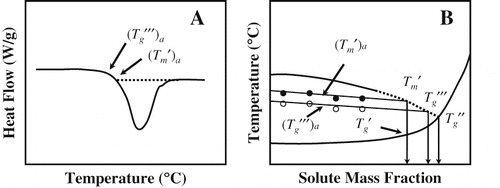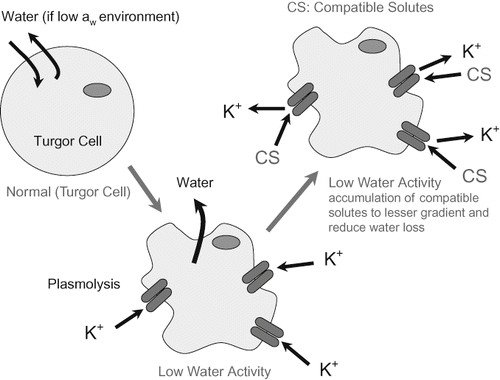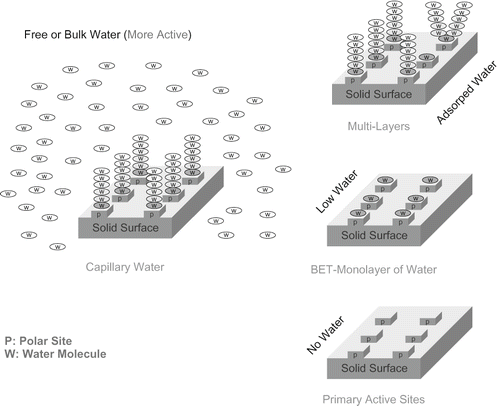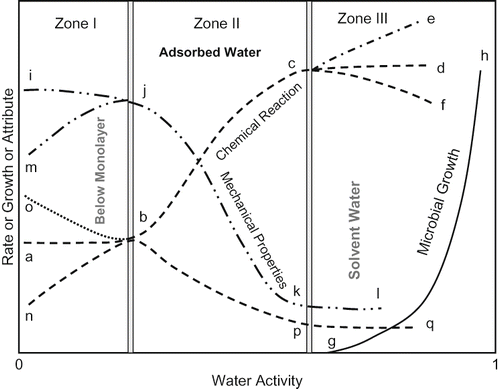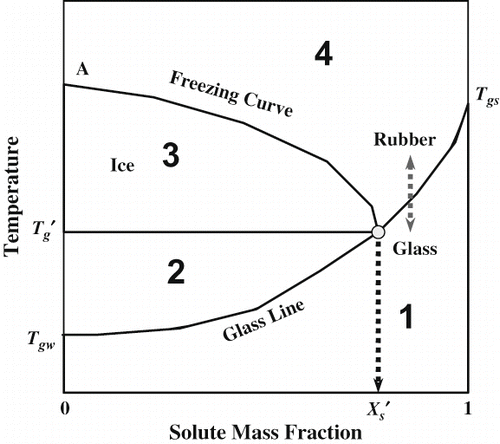Figures & data
Figure 5 Second order transition in foods identified by DSC thermogram. A: ideal second order transition, B: non-ideal second order transition.
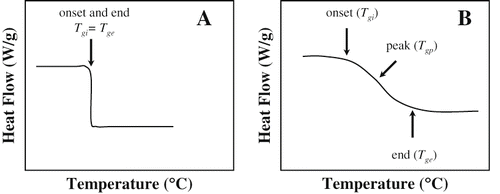
Figure 6 State diagram showing different macro-micro regions (updated from Rahman [Citation22]).
![Figure 6 State diagram showing different macro-micro regions (updated from Rahman [Citation22]).](/cms/asset/15a2c116-bfc3-414d-82db-55176c6232f4/ljfp_a_362978_o_f0006g.gif)
Figure 7 Identification of (Tm ′) a , (Tg ′′′) a , Tm ′, Tg ′′′, Tg ′′, or Tg ′ in the state diagram.
